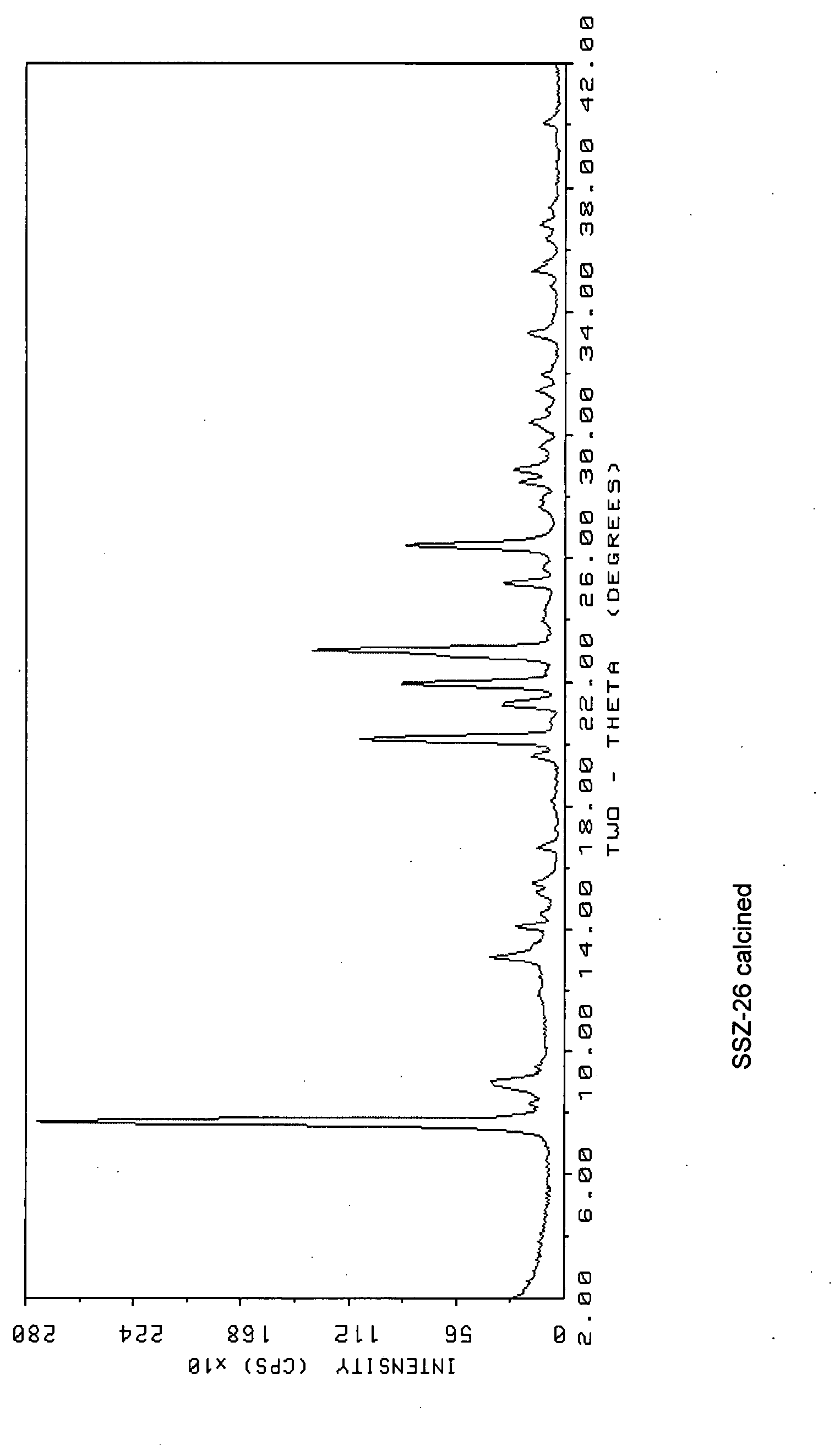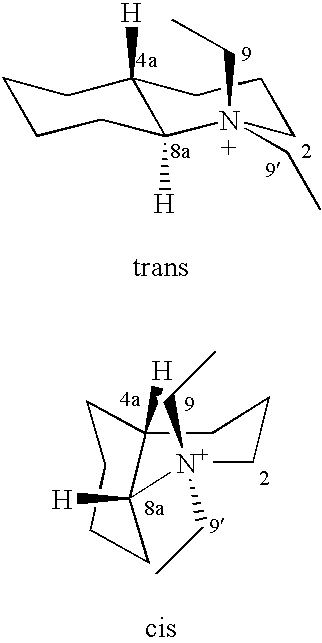Process for preparing aluminum-containing molecular sieve ssz-26
- Summary
- Abstract
- Description
- Claims
- Application Information
AI Technical Summary
Benefits of technology
Problems solved by technology
Method used
Image
Examples
example 1
p Synthesis of Decahydroquinoline
[0042]200 mL glacial acetic acid, 15 mL concentrated sulfuric acid, and 152 g quinoline (1.18 mol) were added to a large stainless steel reactor equipped with a hydrogen flow. Next 15 g of platinum oxide catalyst was added to the mixture. The reaction vessel was then sealed and pressurized and depressurized three times with dry nitrogen. At the end of each depressurization step, the pressure in the reactor vessel was maintained above atmospheric pressure. The reactor was then pressurized with hydrogen gas to 1500 psi and then depressurized to just above atmospheric pressure twice. The vessel was then pressurized to 1500 psi hydrogen. After a few hours, the pressure dropped to 400 psi and the reactor vessel was then pressurized again with hydrogen to 1500 psi. After an additional two hours, the pressure again dropped to about 400 psi. The vessel was again pressurized with hydrogen to 1500 psi, and the reaction was allowed to continue overnight. At the...
example 2
Synthesis of N,N-Diethyldecahydroquinolinium
[0045]In a 500 mL round-bottom flask, 33.2 g (0.24 mol) of the liquid decahydroquinoline fraction was mixed with 228 mL methanol. 34.8 g potassium bicarbonate (0.35 mol) was then added, and a magnetic stirrer was added to the mixture to allow mixing in the subsequent steps. Next, 90.2 g iodoethane (0.58 mol) was added dropwise. After allowing the mixture to stir at room temperature for two hours, the mixture was refluxed overnight. The mixture was then allowed to cool to room temperature, and the potassium salts were removed by filtration. The filtrate was then rotoevaporated to remove the methanol solvent. The resulting solids were then extracted with chloroform, and the product was recovered by rotoevaporation of the chloroform.
[0046]The residues were then dissolved in isopropanol and the product was precipitated as a solid with the addition of an excess of ethyl ether. The solids were then collected by filtration and washed with ethyl e...
example 3
Synthesis of SSZ-26 with Pure 3:1 Ratio of Cis / Trans N,N-Diethyldecahydroquinolinium
[0048]8.96 g of a hydroxide solution of cis-N,N-diethyldecahydroquinolinium (0.28 mmol / g), 1.39 g of a hydroxide solution trans-N,N-diethyldecahydroquinolinium (0.60 mmol / g), 3 g 1N NaOH were added to 23 mL Teflon liner. The mixture was then placed in vented fume hood to allow some of the water to evaporate. The total mass of the mixture was then adjusted to 10.8 g with the addition of deionized water. Then 0.80 g Cabosil M-5 and 0.25 g zeolite Y (LZY-62) were thoroughly mixed to create a uniform suspension. The mixture was then heated as in Comparative Example A. After 7 days, the crystallized solids were recovered by filtration (0.86 g product). XRD analysis indicated the product was pure SSZ-26.
PUM
 Login to View More
Login to View More Abstract
Description
Claims
Application Information
 Login to View More
Login to View More - R&D
- Intellectual Property
- Life Sciences
- Materials
- Tech Scout
- Unparalleled Data Quality
- Higher Quality Content
- 60% Fewer Hallucinations
Browse by: Latest US Patents, China's latest patents, Technical Efficacy Thesaurus, Application Domain, Technology Topic, Popular Technical Reports.
© 2025 PatSnap. All rights reserved.Legal|Privacy policy|Modern Slavery Act Transparency Statement|Sitemap|About US| Contact US: help@patsnap.com


